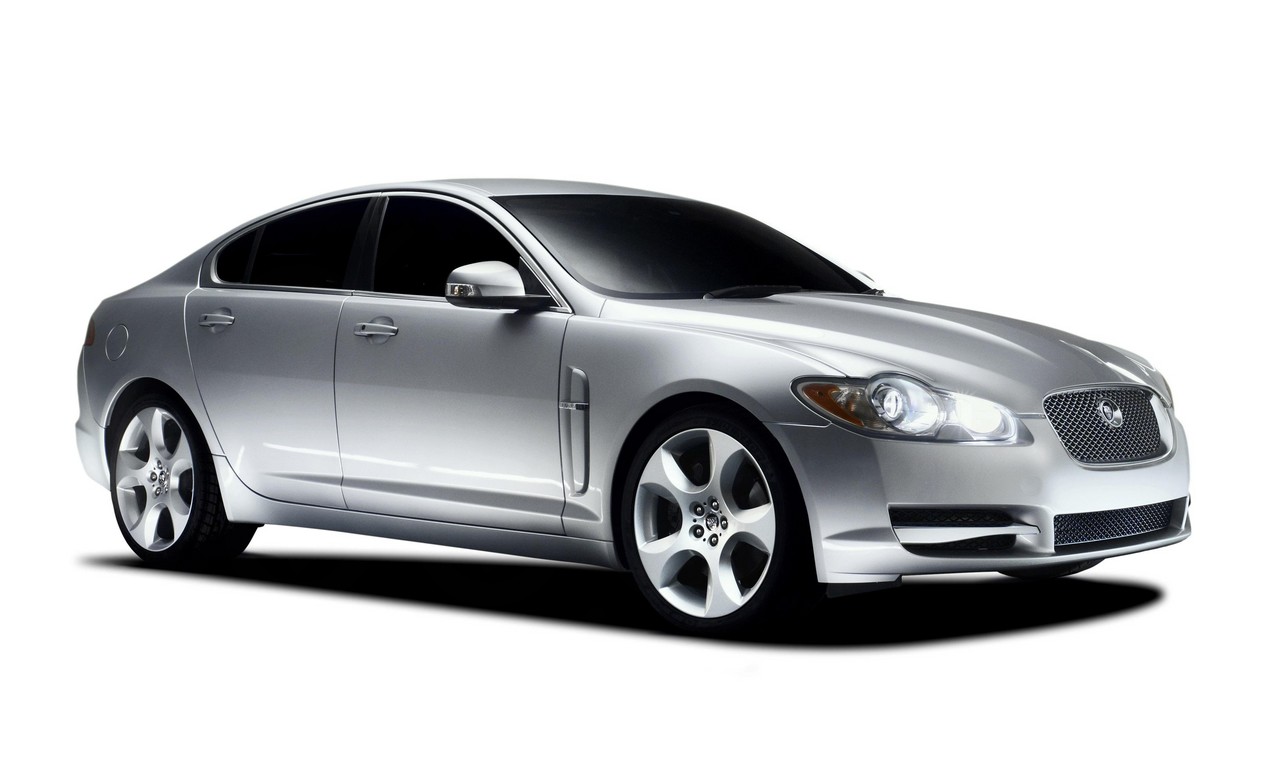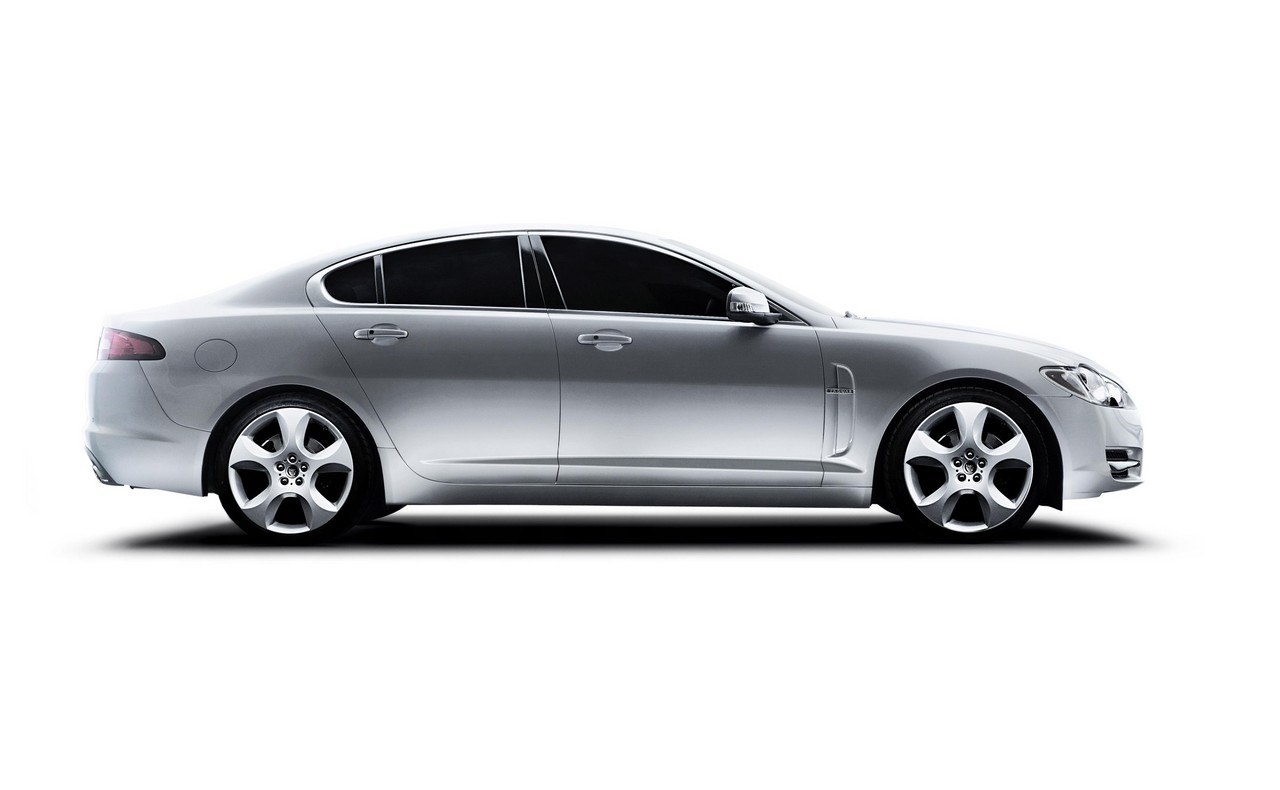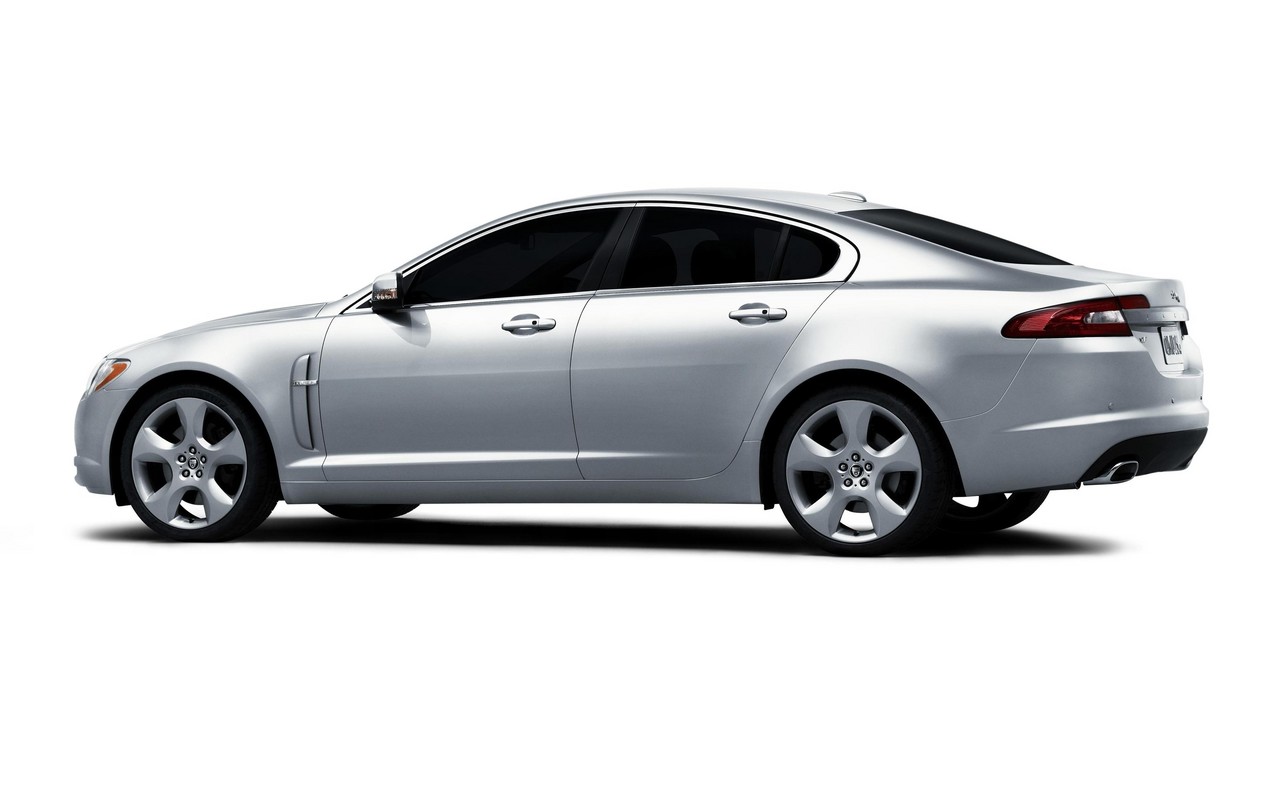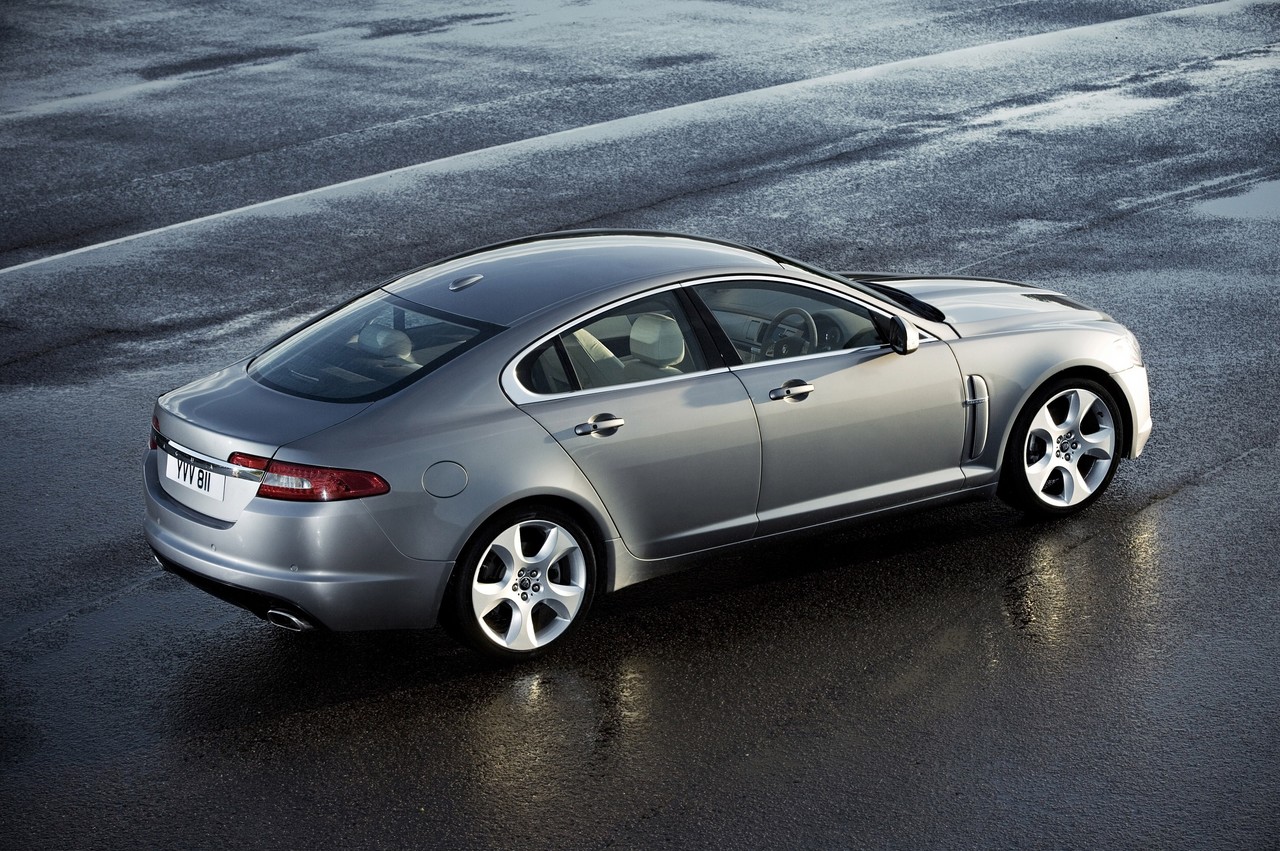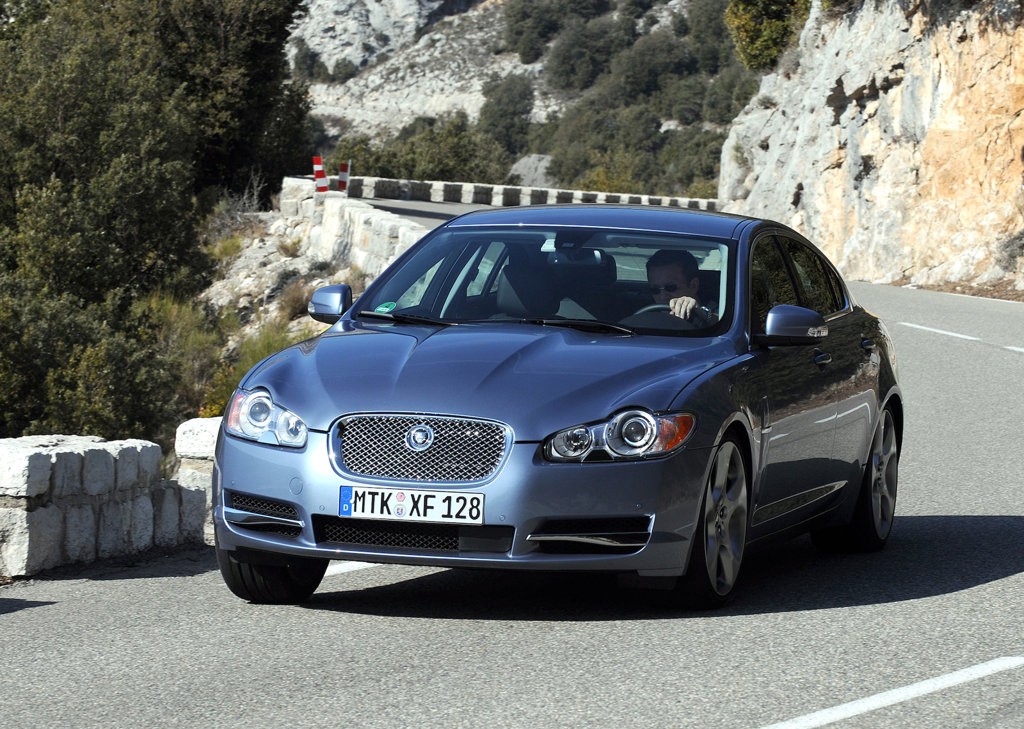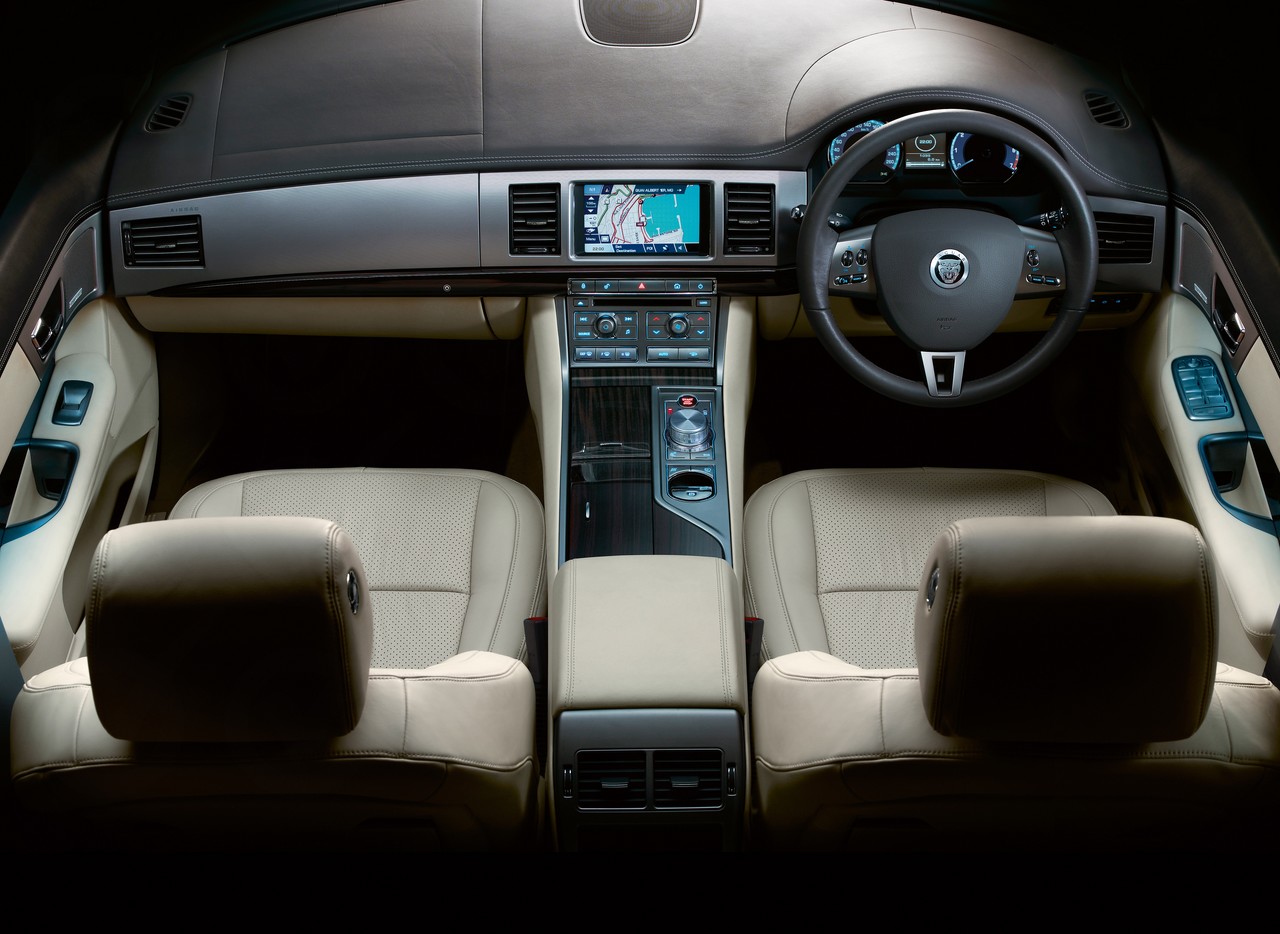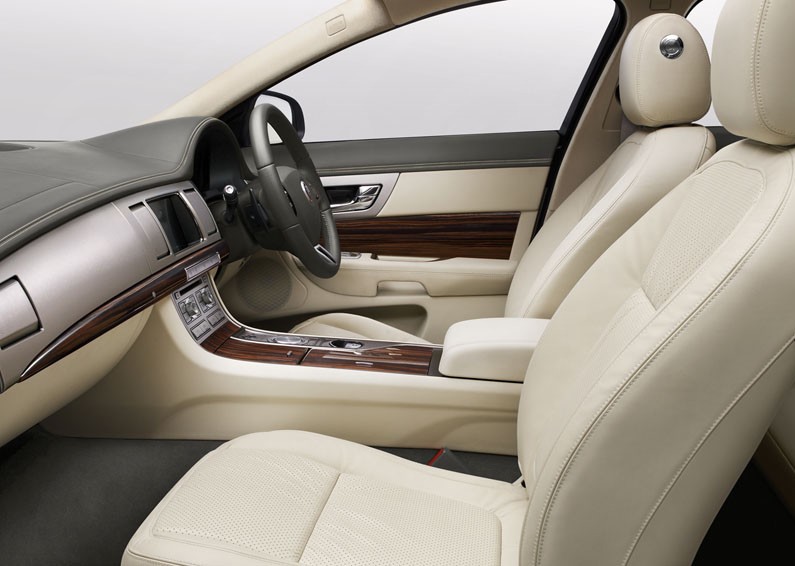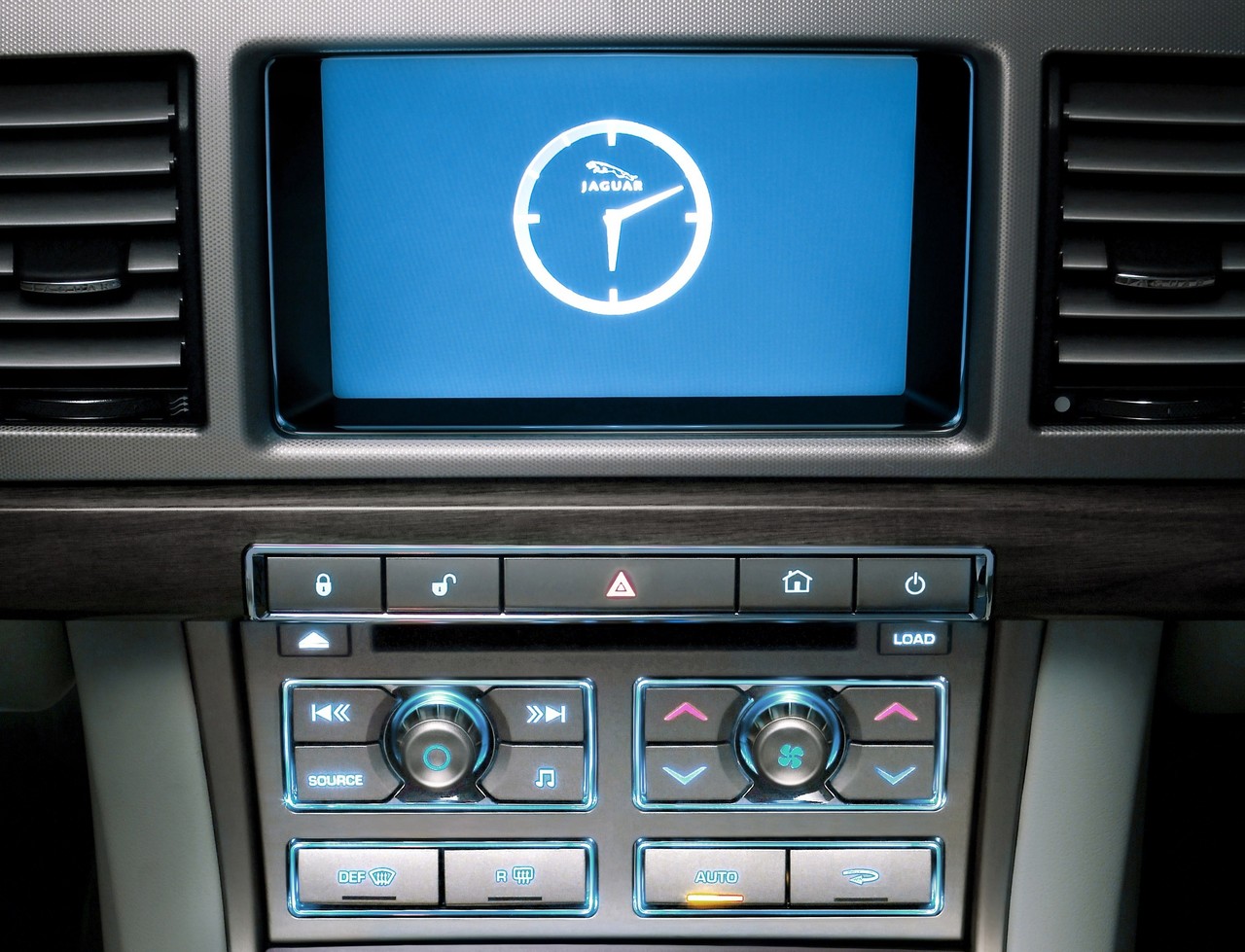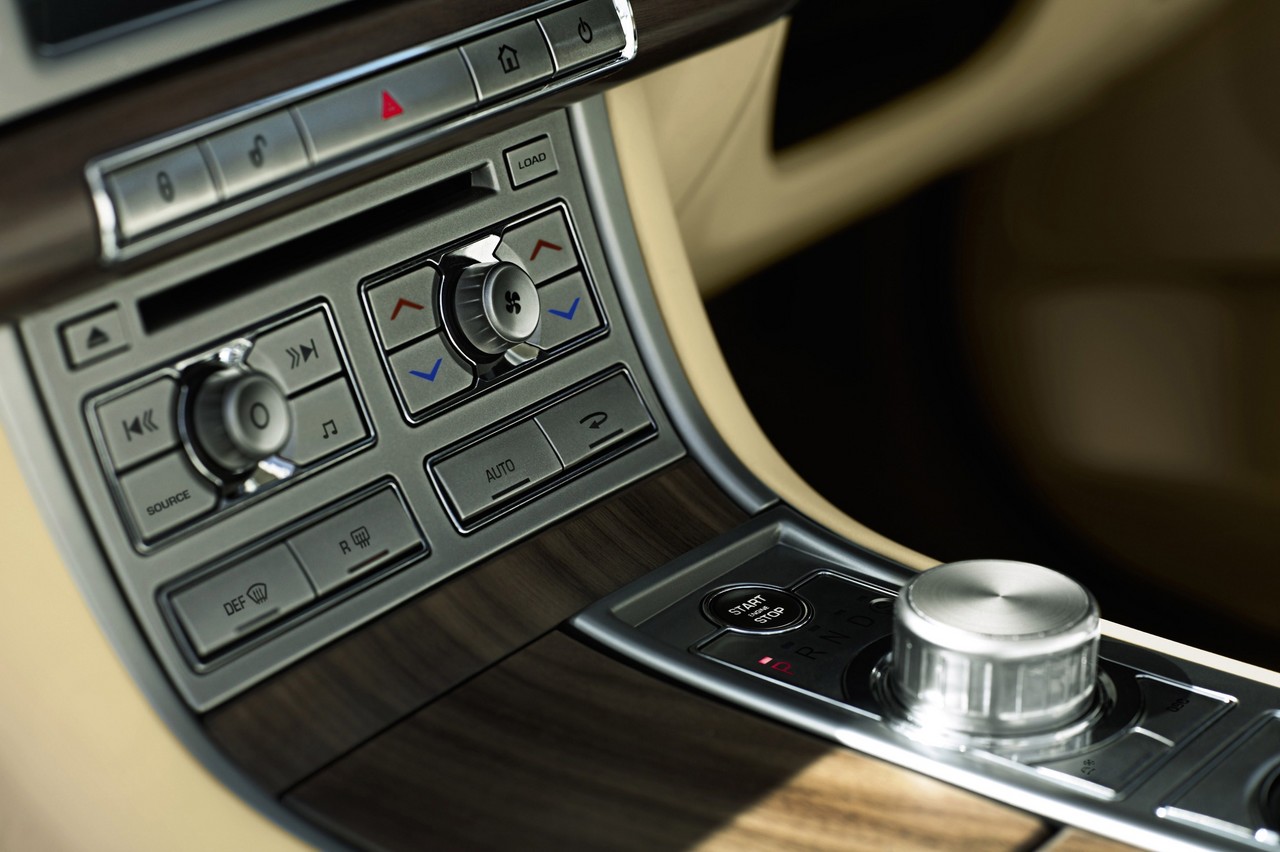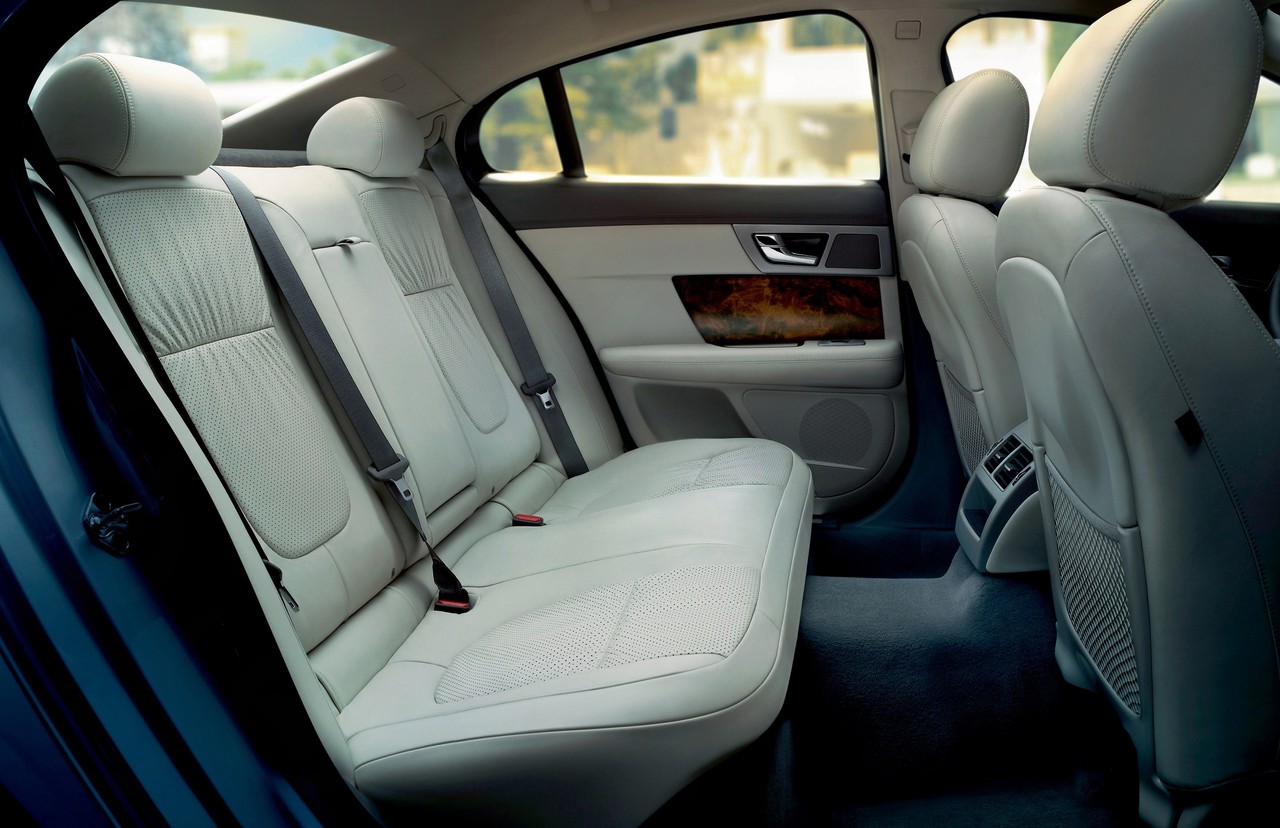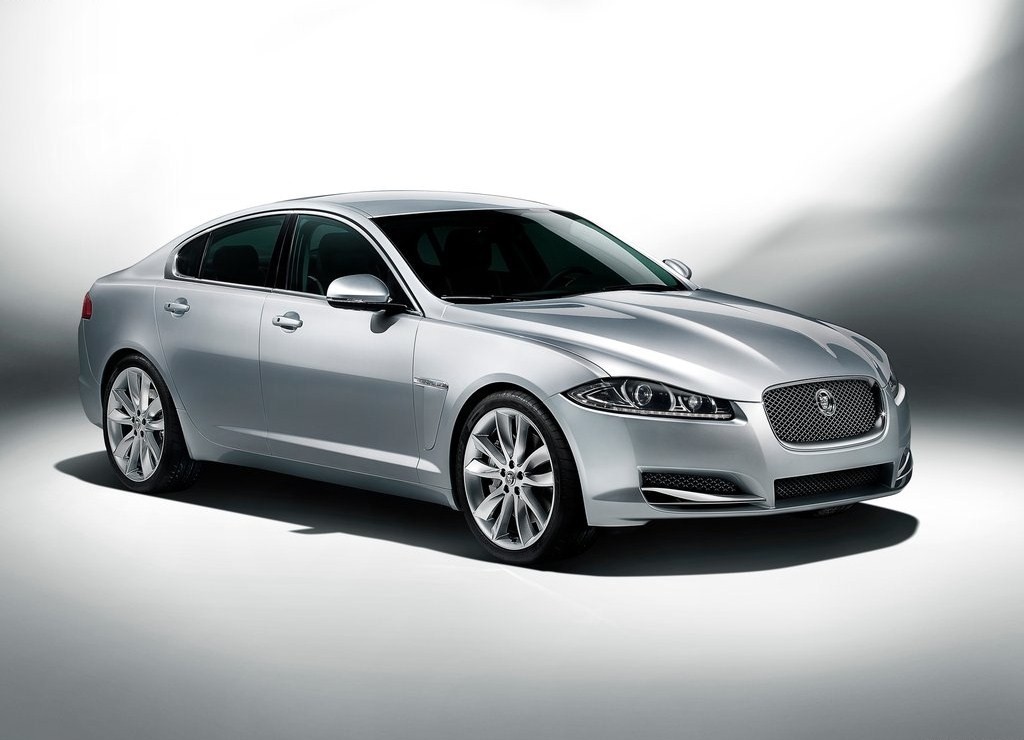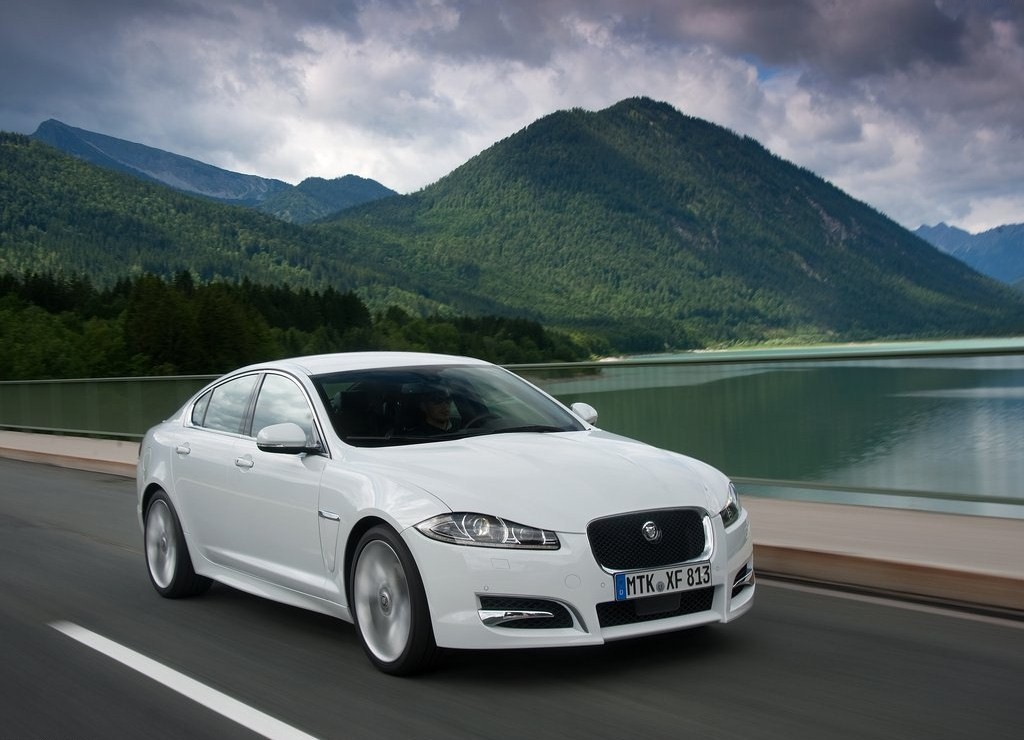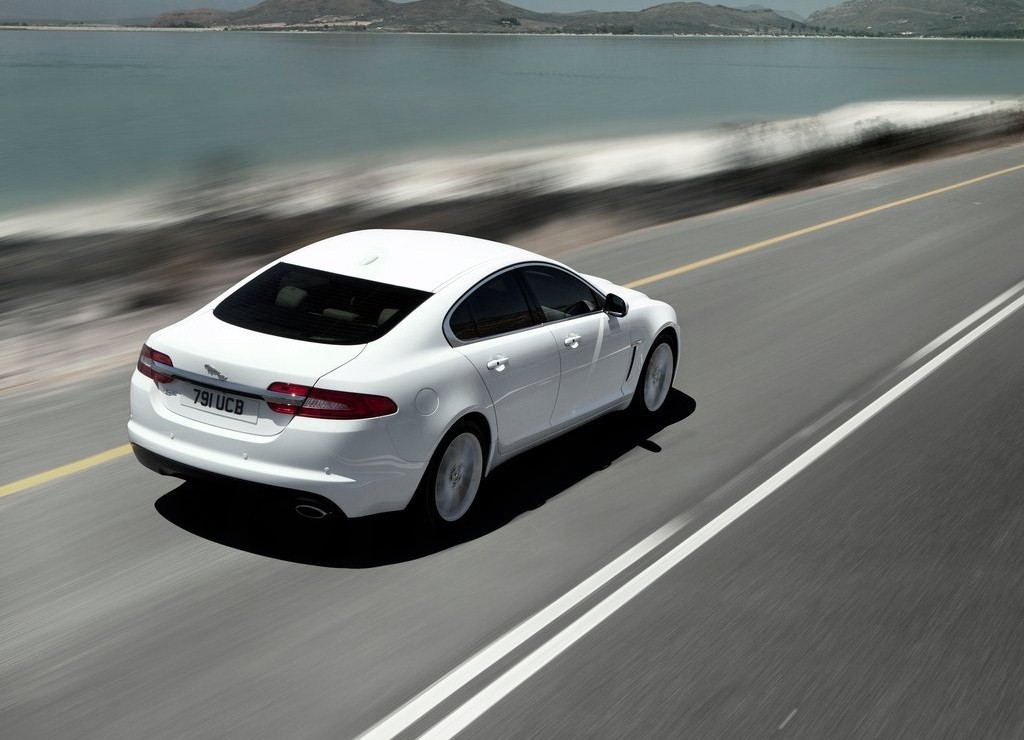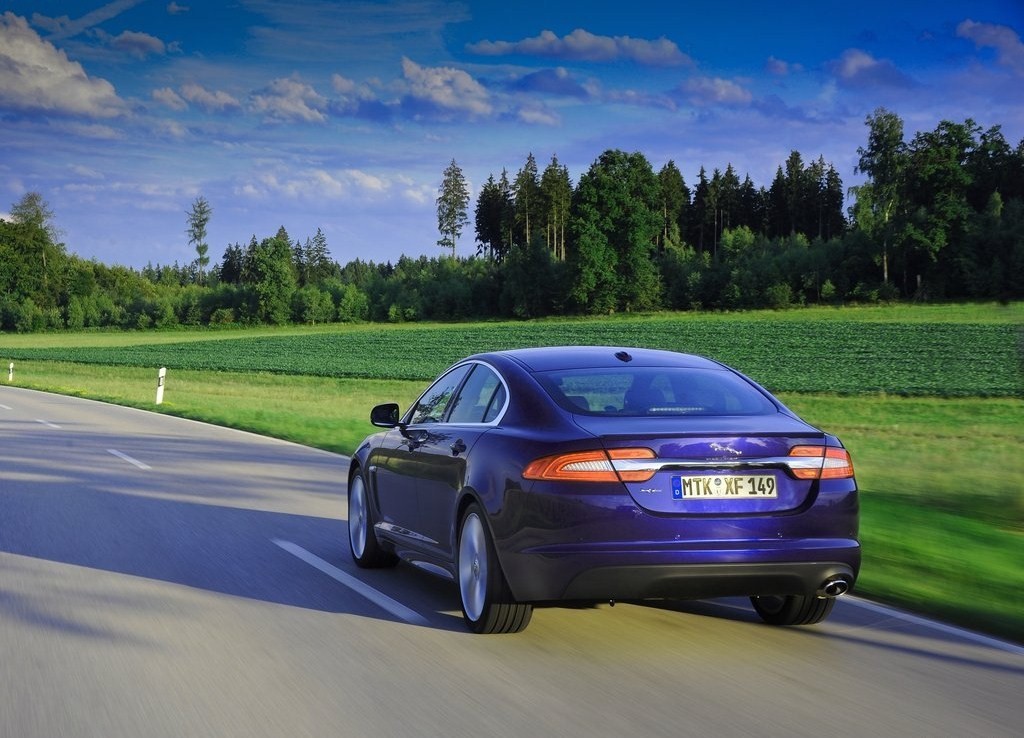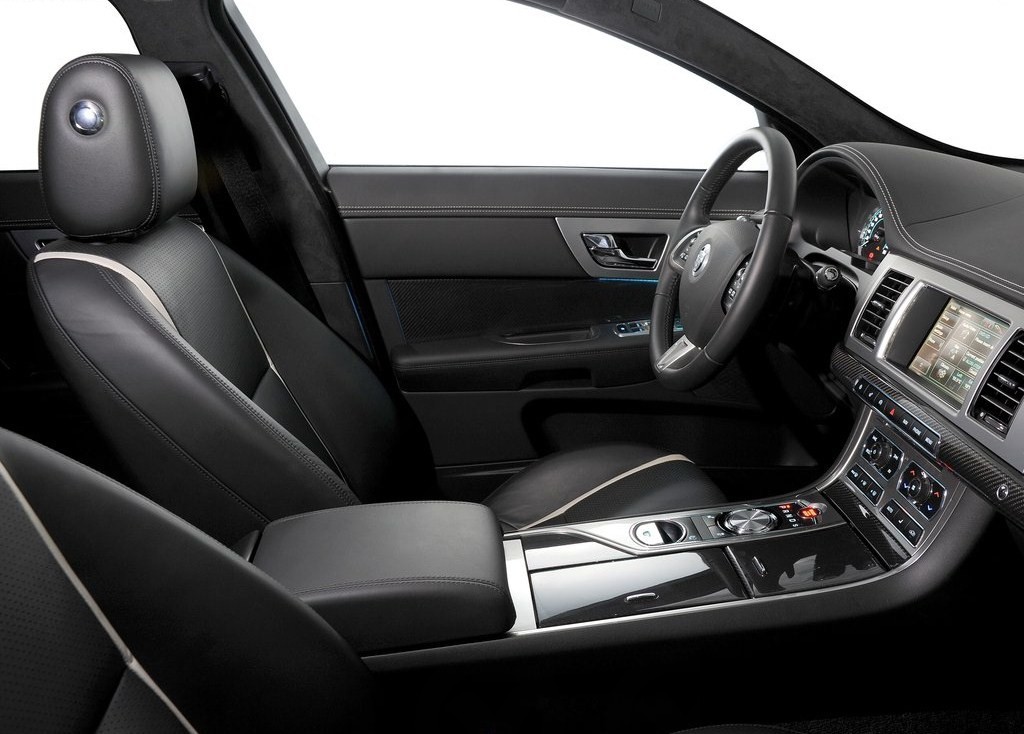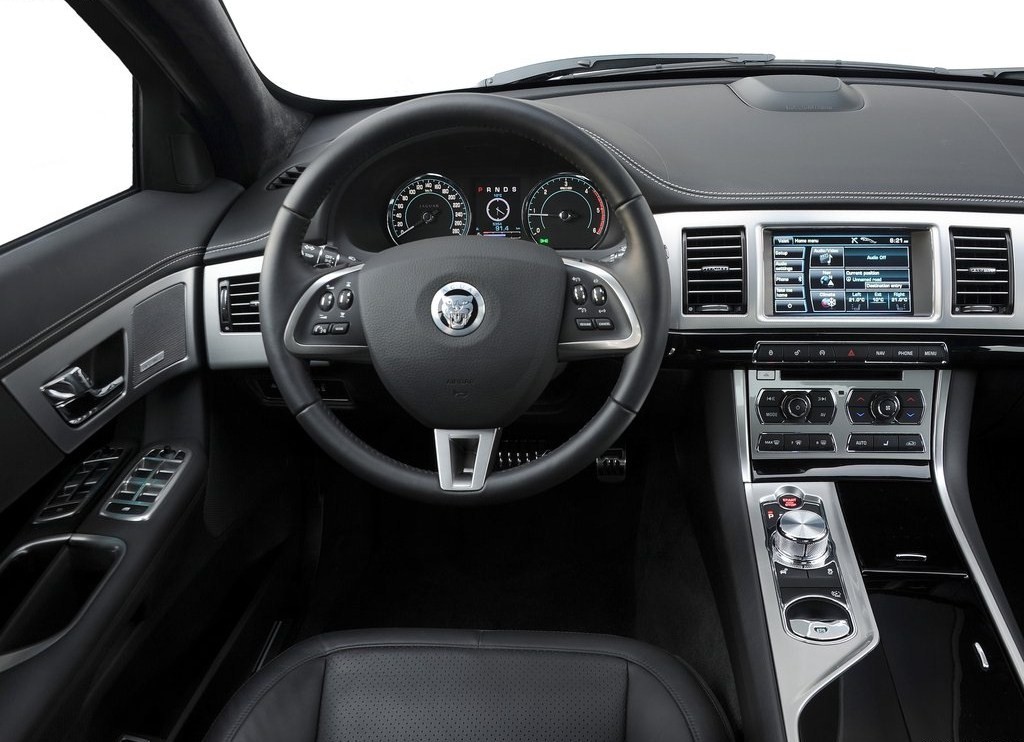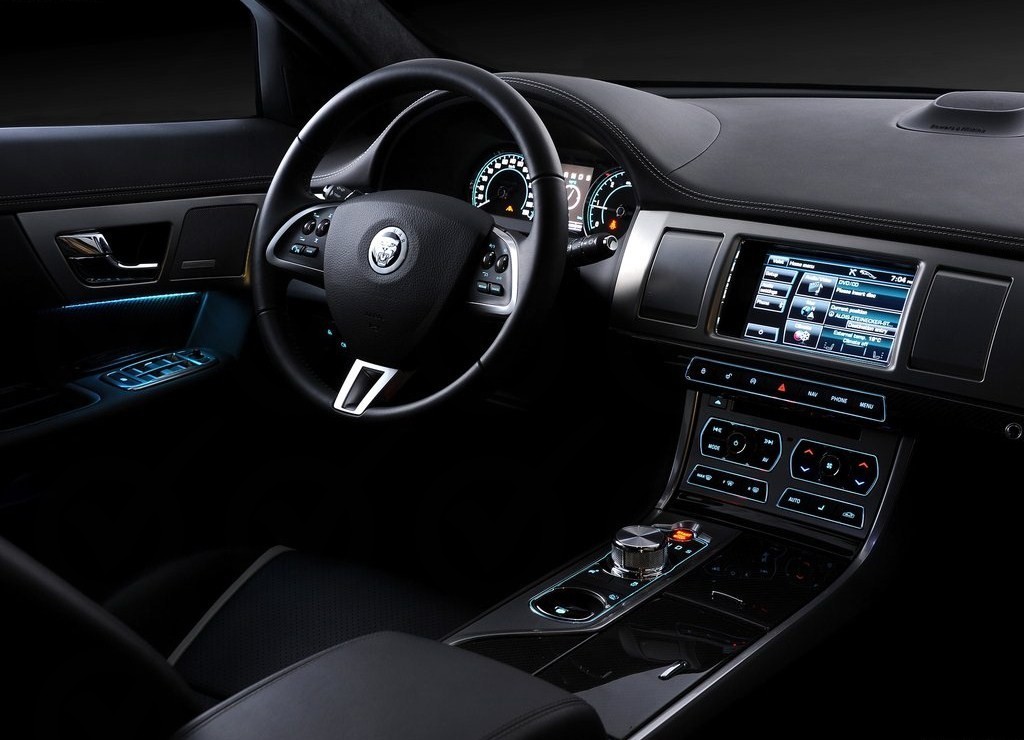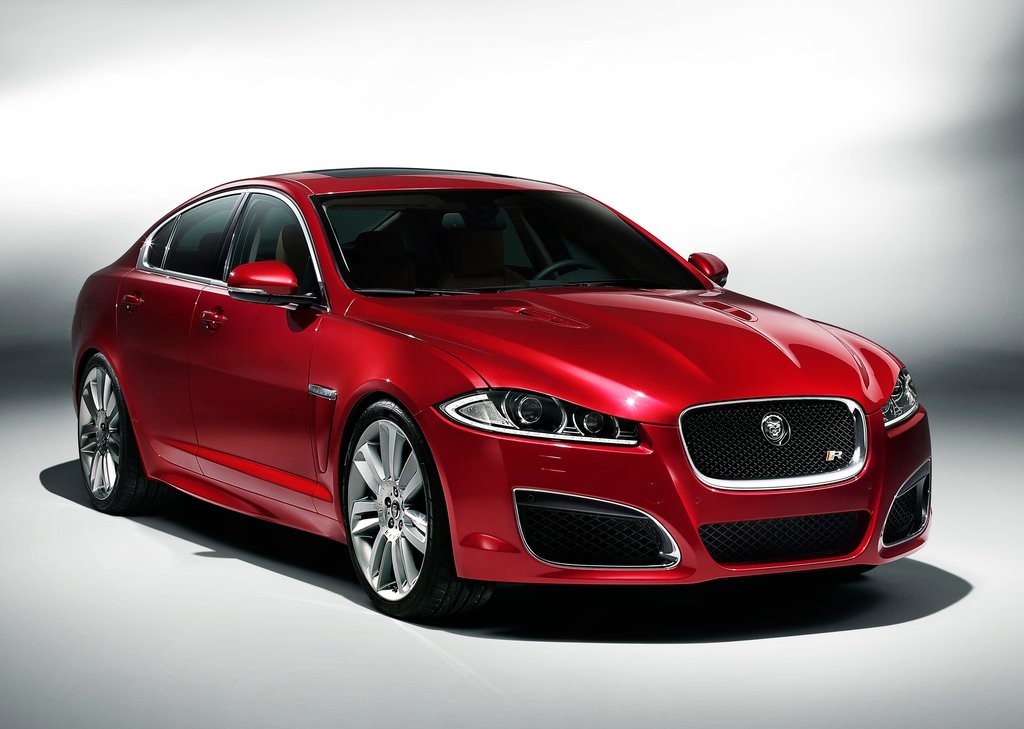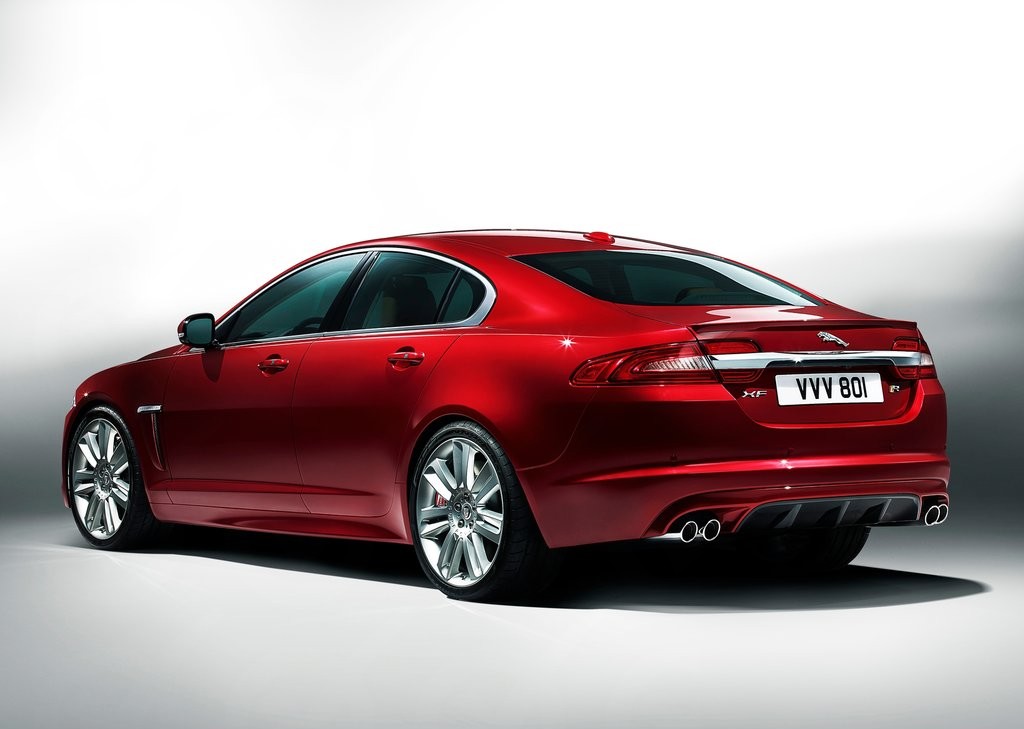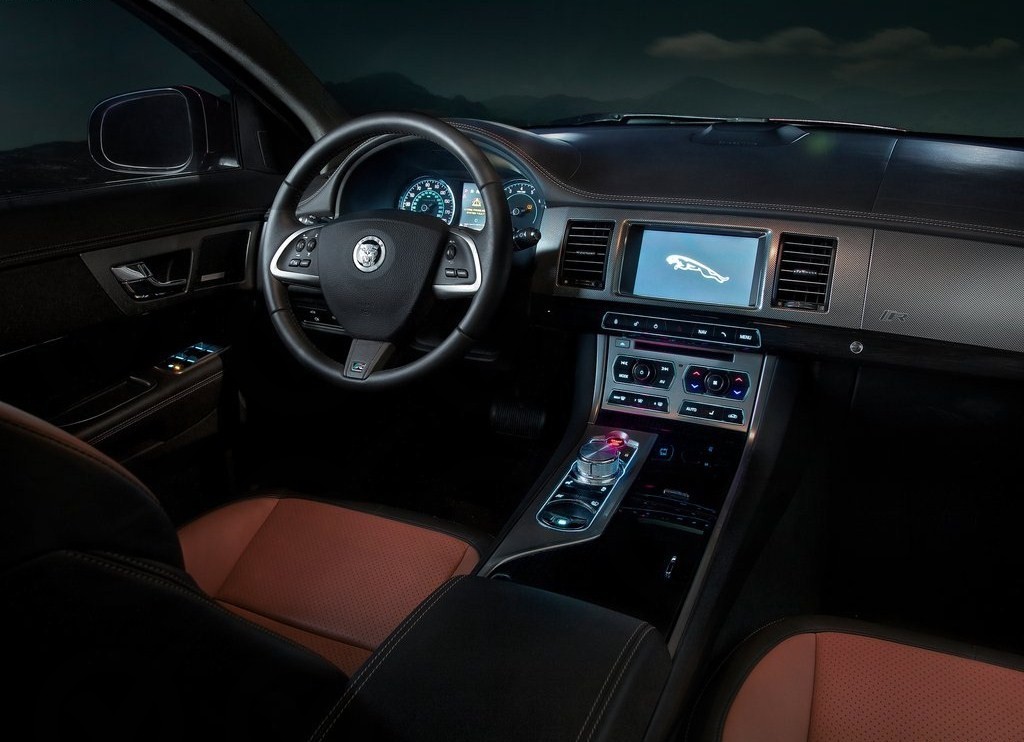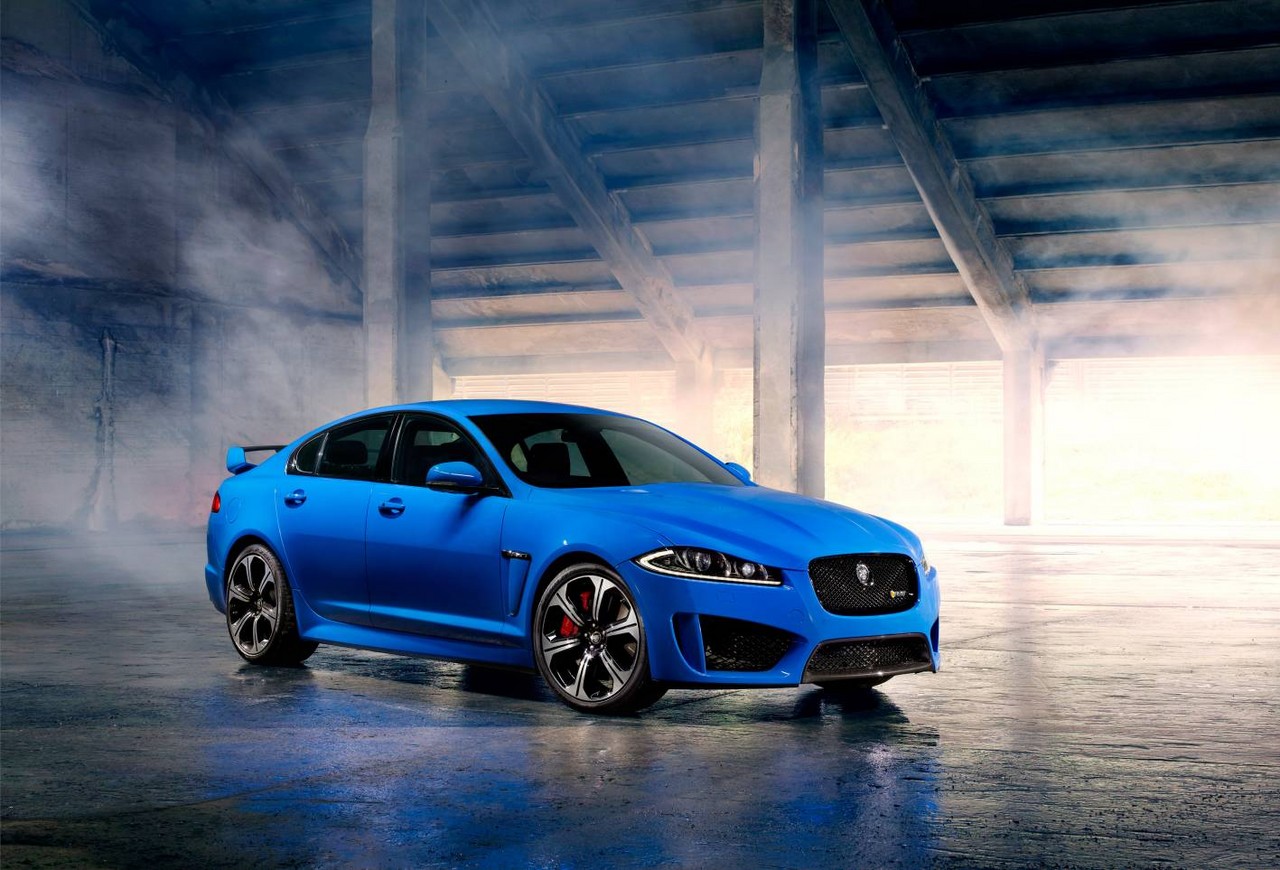
- Range of responsive engines
- Supple ride
- Stylish, modern interior
- Well-weighted steering provides good feedback
- Poor rear seat headroom and visibility
- Lag from 2.2- and 2.7-litre turbo-diesel engines
- For X250 XF SV8, 4.2-litre supercharged V8 only delivers its best at WOT. Modifications should be considered .
- Limited rear seat headroom
- Limited rear visibility
Review: Jaguar X250.I XF (2008-11)
Overview
Released in June 2008, the Jaguar X250 Series I (X250.I) XF was a large, premium sedan. Manufactured in Birmingham, England, the rear-wheel drive XF range initially consisted of the 2.7D, 4.2 V8 and SV8 variants, with the former two variants available in Luxury and Premium Luxury editions. In 2008, the range was expanded with the introduction of the 3.0 V6. All variants, however, were fitted with a six-speed ZF automatic transmission with a sequential shift function.
In August 2009, the 3.0D S replaced the 2.7D, while the 4.2 V8 and SV8 variants were effectively replaced by the 5.0 V8 and R variants, the latter introducing naturally aspirated and supercharged 5.0-litre direct-injection V8 petrol engines; the bodyshell was also stiffened with a new rear subframe and the adoption of a boot cross-brace (previously restricted to the SV8). In July 2010, an unnamed, entry-level 3.0 V6 edition was introduced, with the 3.0D S equivalent following in September 2010.
Dimensions and suspension
The basic sub-structure of the X250 XF was carried over from the X200 S-Type , though the XF was 84 mm longer (at 4961 mm), 59 mm wider (1877 mm) and 37 mm taller (1460 mm); the wheelbase, however, was unchanged at 2909 mm. Furthermore, the XF was fitted with unequal length wishbone front suspension and multi-link rear suspension (both subframe-mounted with coil springs and gas-filled dampers).
| Variant | Editions | Years | Engine | Trans. | Peak power | Peak torque |
|---|---|---|---|---|---|---|
| 2.7D | Luxury | 2008-09 | 2.7-litre twin-turbo diesel V6 | 6sp auto | 152 kW at 4000 rpm | 435 Nm at 1900 rpm |
| 3.0D S | N/A | 2010-11 | 3.0-litre twin-turbo-diesel V6 | 6sp auto | 202 kW at 4000 rpm | 600 Nm at 2000 rpm |
| Luxury, Portfolio |
2009-11 | |||||
| 3.0 V6 | N/A | 2010-11 | 3.0-litre petrol V6 | 6sp auto | 175 kW at 6800 rpm | 293 Nm at 4100 rpm |
| Luxury | 2008-11 | |||||
| 4.2 V8 | Premium Luxury | 2008-09 | 4.2-litre petrol V8 | 6sp auto | 219 kW at 6000 rpm | 411 Nm at 4100 rpm |
| 5.0 V8 | N/A | 2010-11 | 5.0-litre petrol V8 | 6sp auto | 283 kW at 6500 rpm | 515 Nm at 3500 rpm |
| Premium Luxury | 2009-10 | |||||
| Portfolio | 2009-11 | |||||
| SV8 | N/A | 2008-09 | 4.2-litre s/charged petrol V8 | 6sp auto | 306 kW at 6250 rpm | 560 Nm at 3500 rpm |
| R | N/A | 2009-11 | 5.0-litre s/charged petrol V8 | 6sp auto | 375 kW at 6000-6500 rpm | 625 Nm at 2500-5500 rpm |
Safety equipment
Standard safety equipment for the XF included dual front airbags, front side airbags, full-length curtain airbags (i.e. for front and rear occupants), ABS, electronic brake force distribution, brake assist, electronic stability control, cornering braking control, traction control and seatbelt pretensioners for all seats. The XF was also fitted with a pedestrian impact system which – in the event of a pedestrian collision – fired actuators that angled the bonnet and provided a clearance with the engine bay to cushion the pedestrian’s impact.
Euro NCAP testing
In Euro NCAP testing , a 2010 XF with a 3.0-litre turbo-diesel engine received a four star safety rating which included a 78 per cent adult occupant protection rating and a 65 per cent child occupant protection rating. In the offset crash test, protection from serious chest and leg injury was marginal for the driver, as was leg protection for the front passenger. Under ANCAP’s methodology , this testing resulted in an adult occupant protection score of 32.38 out of 37.
Features
Standard features for the XF included 17-inch alloy wheels, an eight speaker sound system with auxiliary input and MP3/WMA-compatibility, dual-zone climate control air conditioning, leather-faced seats, a seven-inch colour touch screen with satellite navigation, power adjustable front seats, cruise control, rear parking sensors, Bluetooth connectivity, rain-sensing wipers, automatic headlights, steering wheel gearshift paddles, 60/40 split and flat folding rear seats, remote central locking with proximity key, power windows and heated mirrors, power adjustable steering column, power-operated park brake, ambient lighting, 12 volt power outlet, trip computer, motion-sensing alarm and immobiliser; the 3.0DS, however, was fitted with 18-inch ‘Cygnus’ alloy wheels
The Luxury editions were further equipped with 18-inch alloy wheels, a six-disc CD player, auxiliary input and MP3/WMA-compatibility, additional front seat power adjustment and driver memory settings (driver’s seat, mirrors and steering wheel). In October 2011, however, standard features for the Luxury editions were extended to include bi-xenon headlights, front parking sensors and a reversing camera.
Beyond this, the Premium Luxury editions featured 19-inch alloy wheels, a nine speaker sound system (including subwoofer), full leather upholstery, bi-xenon headlights with washers, front parking sensors, reversing camera, electrochromatic power folding mirrors and burr walnut trim.
The Portfolio editions were distinguished by their 20-inch alloy wheels, a fourteen speaker Bowers & Wilkins surround sound system, heated and ventilated front seats, park assist display, heated steering wheel and a TV tuner. Inside, the Portfolio editions also featured suede headlining, contrast stitching on leather trim, unique veneers and deep-pile carpet mats with contrast edging and embroidered logos.
XF SV8
Compared to the Premium Luxury, the SV8 featured 20-inch alloy wheels with sports suspension, fourteen speaker Bowers & Wilkins surround sound system, heated and ventilated front seats with adjustable bolsters, TV tuner, voice recognition and tyre pressure monitoring. The SV8 was also fitted with Jaguar’s Computer Adaptive Technology Suspension (CATS) and two-stage adaptive dampers which continually adjusted to road conditions and driving inputs.
XF R
Released in August 2009, the XF R was powered by a 5.0-litre direct-injection V8 engine with a twin vortex Roots-type supercharger. The XF R was fitted with faster-ratio steering and Adaptive Dynamics – replacing CATS – which provided continuously variable electronically-controlled damping according to road conditions and driver behaviour. The XF R also featured Active Differential Control (ADC), which utilised an electronically controlled rear differential with a multi-plate clutch to manage power delivery to the rear wheels and maximise traction.
With respect to features, the XF R was similarly equipped to the SV8, albeit with 18 and 14-way power adjustable seats for the driver and front passenger respectively and an auxiliary iPod input. Visually, the XF R could be identified by its new front bumper with larger grille, black mesh between chrome-outlined air intakes, bonnet louvres, sill extensions, new exterior mirrors, quad-exhaust outlets, body-coloured lower valance on the rear bumper and boot-lid spoiler.
2010 XF 75th Anniversary editions
In October 2010, 75th Anniversary editions were released; these models were distinguished by their 20-inch ‘Senta’ alloy wheels, quad exhaust finishers and iPod control module.
Brochures
- Brochure: Jaguar X250.I XF (February 2008)
- Brochure: Jaguar X250.I XF (November 2009)
- Brochure: Jaguar X250.I XF (February 2010)
Review: Jaguar X250.II XF (2011-15)
Overview
Released in October 2011, the X250 Series II (X250.II) XF introduced a revised range, revised styling and an upgraded interior. The diesel models were fitted with eight-speed ZF automatic transmissions and the range expanded with 2.2D, 3.0D and 3.0D S variants, the former fitted with featured Jaguar’s ‘Auto Stop/Start’ technology which enabled the engine to be shut down when the vehicle was stationary.
Visually, the X250.II could be identified by its sleeker headlights with daytime LED running lights, reshaped bonnet, front guards with triangular side vents and LED tail-lights; the XF R also had a new body kit. Inside, there were reshaped seats, a high resolution colour TFT screen for the driver’s instrument display (as per the X351 XJ ), soft-touch switchgear and improved contrast for the touch-screen display which had additional switches directly below it.
December 2012 XF upgrades
The X250.II XF range was revised in December 2012 with the introduction of a 2.0T variant, while the 5.0 V8 was replaced by the 3.0S. Of the new variants,
- the 2.0T variant was powered by a 2.0-litre four-cylinder petrol engine which featured a low-inertia turbocharger, chain-driven double overhead camshafts and variable timing for both the intake and exhaust valves; and,
- the 3.0S had a 3.0-litre V6 petrol engine with direct-injection, dual independent variable cam timing (DIVCT), a Roots-type twin vortex supercharger mounted in the ‘V’ of the engine, water-cooled intercooler and a compression ratio of 10.5:1.
Furthermore, an eight-speed ZF automatic transmission was fitted as standard across the range, while the ‘Auto Stop/Start’ system was extended to variants with supercharged V6 and V8 petrol engines. Inside, the navigation system was enhanced and included Dynamic Zoom, Visual Lane Guidance, Road Sign Board and Point of Interest features.
| Variant | Editions | Years | Engine | Trans. | Peak power | Peak torque |
|---|---|---|---|---|---|---|
| 2.0T | Luxury, Premium Luxury |
2012-15 | 2.0-litre turbo petrol I4 | 8sp auto | 176 kW at 5500 rpm | 340 Nm at 2000-4000 rpm |
| 2.2D | Luxury, Premium Luxury |
2011-15 | 2.2-litre turbo-diesel I4 | 8sp auto | 140 kW at 3500 rpm | 450 Nm at 2000 rpm |
| 3.0D | Luxury, Premium Luxury |
2011-15 | 3.0-litre twin-turbo-diesel V6 | 8sp auto | 177 kW at 4000 rpm | 500 Nm at 2000 rpm |
| 3.0D S | N/A, Portfolio |
2011-15 | 3.0-litre twin-turbo-diesel V6 | 8sp auto | 202 kW at 4000 rpm | 600 Nm at 2000 rpm |
| 3.0 V6 | Luxury, Premium Luxury |
2011-12 | 3.0-litre petrol V6 |
6sp auto | 175 kW at 6800 rpm | 293 Nm at 4100 rpm |
| 3.0S | Luxury, Portfolio |
2012-15 | 3.0-litre supercharged petrol V6 |
8sp auto | 283 kW at 5400 rpm | 515 Nm at 3500 rpm |
| 5.0 V8 | Luxury, Portfolio |
2011-12 | 5.0-litre petrol V8 |
6sp auto | 283 kW at 6500 rpm | 515 Nm at 3500 rpm |
| R | N/A | 2011-12 | 5.0-litre supercharged petrol V8 | 6sp auto | 375 kW at 6000-6500 rpm | 625 Nm at 2500-5500 rpm |
| 2012-15 | 5.0-litre supercharged petrol V8 | 8sp auto | ||||
| R-S | N/A | 2013-15 | 5.0-litre supercharged petrol V8 |
8sp auto | 404 kW at 6500 rpm | 680 Nm at 2500-550 rpm |
Euro NCAP testing
Euro NCAP tested the X250.II XF in 2011 although the results from its previous frontal, side barrier and side pole impacts were carried over since the X250.II was structurally and internally identical to its predecessor. As such, pedestrian test were carried out due to modifications to the bodywork and improvements to the active bonnet sensing system. As a result, the four star safety rating remained, but the pedestrian protection rating improved from 43 to 62 per cent.
Features
Compared to their X250.I predecessors, the X250.II XF models were fitted with new audio systems – the standard system included two USB ports and 30GB hard drive for music storage. Like the XF R, the 3.0D S variants were fitted with a sports bodykit and Adaptive Dynamics.
2013 Jaguar XFR-S
The range-topping Jaguar XFR-S was released in Australia in October 2013. Compared to the XFR, the more powerful engine for the XFR-S had larger front air intakes and an optimised exhaust system whereby the central silencer was replaced with an X-piece and near straight-through pipes. The XFR-S was also fitted with uprated driveshafts, a larger central bearing on the propshaft and a new torque converter.
The XFR-S was fitted with 20-inch lightweight forged alloy wheels and 265/35 front and 295/30 Pirelli tyres, while the braking package consisted of internally ventilated 380 mm front and 376 mm rear brake discs. Furthermore, the XFR-S suspension had adaptive dampers, revised spring rates, a new rear subframe with stiffer bushes and unique front and rear suspension knuckles for provide greater camber and castor stiffness.
Inside, the XFR-S featured Warm Charcoal leather trim on the seats and doors (enhanced through the use of ‘carbon effect’ leather on the seat bolsters and arm rests), a Dark Aluminium fascia, contrasting colour stitching and micro-piping which could be matched to the exterior paint scheme.
Brochures
- Brochure: Jaguar X250.II XF (September 2011)
- Brochure: Jaguar X250.II XF (March 2012)
- Brochure: Jaguar X250.II XF (December 2013)
Related links
- Specifications: Jaguar X250.II XF (December 2013)
- Specifications: Jaguar X250.II XF (May 2014)
- Wikipedia.org: Jaguar X250 XF
